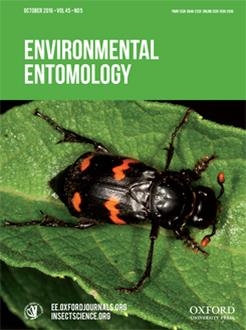Environmental heterogeneity is a major factor influencing the spatial distribution of organisms. Due to intimate relationships with their hosts, parasitic insects are inclined to be even more sensitive to variations. This study aimed to verify the relationship between spatial distribution of Mutillidae, potential hosts, and the effect of heterogeneity in the distribution of both, testing the hypotheses: i) the spatial distribution of mutillids depends on the distribution of hosts and ii) variation in environmental heterogeneity affects the distribution of both. Sampling was conducted in four fragments of the Cerrado. We collected Hymenopteran specimens from 25 plots of one hectare using 18 Malaise traps throughout one year, totalizing 32,400 trap-hours. Female Mutillidae were hand collected at all sampling points, for a total of 450 man-hours. At each hectare plot, we obtained the environmental variables from nine plots of 25 m2. A total of 1,089 individuals were collected (Apidae: 311; Crabronidae: 165; Shpecidae: 84; Vespidae: 229) belonging to 127 species of potential hosts (bees and wasps) and 300 individuals (42 species) of Mutillidae. Leaf-litter depths showed significant relation in host–parasitoid distribution. The spatiotemporal distribution followed the predator–prey model for Mutillidae, and environmental heterogeneity was a factor that determined the structure of the host–parasitoid community. The results suggest an intense relationship between the Mutillidae and Crabronidae, as well as Sphecidae and two Apidae subfamilies (Halictinae and Colletinae). These families and subfamilies present behavior in which they build nests in aggregations even each female being solitary. Crabronidae is considered the best potential host for Mutillidae.
BioOne.org will be down briefly for maintenance on 14 May 2025 between 18:00-22:00 Pacific Time US. We apologize for any inconvenience.
How to translate text using browser tools
23 August 2016
Environmental Heterogeneity in Parasitoid–Host Interaction for Mutillidae (Hymenoptera: Apocrita)
R. Aranda,
G. Graciolli
ACCESS THE FULL ARTICLE
It is not available for individual sale.
This article is only available to subscribers.
It is not available for individual sale.
It is not available for individual sale.

Environmental Entomology
Vol. 45 • No. 5
October 2016
Vol. 45 • No. 5
October 2016
habitat heterogeneity
parasitoidism
savanna




